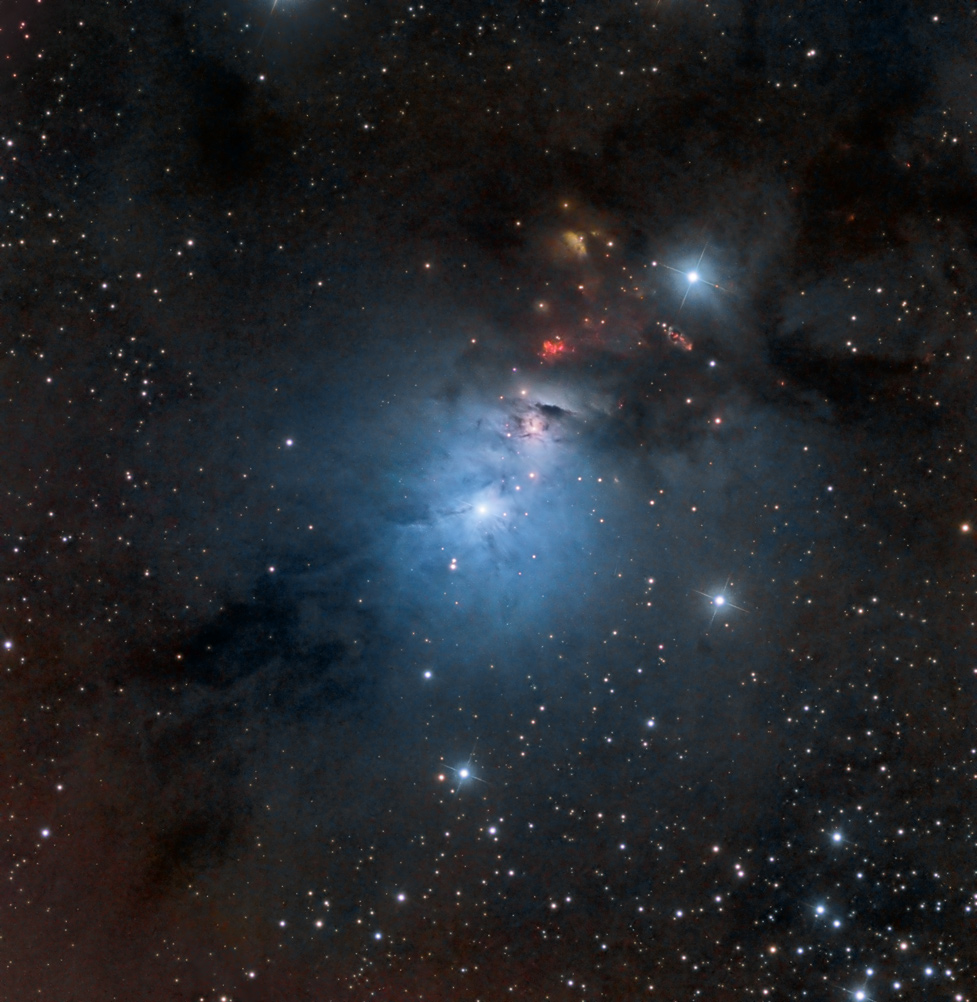

NGC1333 is a reflection nebula visually located in the constellation Perseus. The blue color comes from the light from many young blue stars in this star-forming region
(hundreds of which are less than a million years old; for reference, our sun is about 5 billion years old) reflecting off the gas/dust of the region. The red regions just above the blue reflection are
Herbig‐Haro objects.
Surrounding, and partially obscuring, the blue reflection nebula is a dark nebula, catalogued as Barnard 205 (or Lynds 1450).
This nebula is in a cloud of space dust (a "molecular cloud") about 1000 light years away from us, and (assuming that distance is correct), the photo shows about eleven light years across. The entire field
of the uncropped image is about the same width as a full moon. There are no background galaxies or stars (all the stars are between us and the nebula, because the molecular cloud prevents light from
penetrating it (which also accounts for the dusty look to parts of the photo).
Copyright 2020, 2021 Mark de Regt